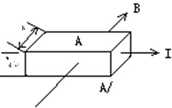Michael Porter, who has made his name throughout the business community by advocating his theories of competitive advantages, is now swimming into even more shark-infested waters, arguing that competition can save even America’s troubled health-care system, the largest in the world. Mr. Porter argues in " Redefining Health Care" that competition, if properly applied, can also fix what ails this sector.
That is a bold claim, given the horrible state of America’s health-care system. Just consider a few of its failings: America pays more per capita for health care than most countries, but it still has some 45m citizens with no health insurance at all. While a few receive outstanding treatment, he shows in heart-wrenching detail that most do not. The system, wastes huge resources on paperwork, ignores preventive care and, above all, has perverse incentives that encourage shifting costs rather than cutting them outright. He concludes that it is "on a dangerous path, with a toxic combination of high costs, uneven quality, frequent errors and limited access to care. "
Many observers would agree with this diagnosis, but many would undoubtedly disagree with this advocacy of more market forces. Doctors have an intuitive distrust of competition, which they often equate with greed, while many public-policy thinkers argue that the only way to fix America’s problem is to quash the private sector’s role altogether and instead set up a government monopoly like Britain’s National Health Service.
Mr. Porter ply disagrees. He starts by acknowledging that competition, as it has been introduced to America’s health system, has in fact done more harm than good. But he argues that competition has been introduced piecemeal, in incoherent and counter-productive ways that lead to perverse incentives and worse outcomes:" health-care competition is not focused on delivering value for patients," he says.
Mr. Porter offers a mix of solutions to fix this mess, and thereby to put the sector on a genuinely competitive footing. First comes the seemingly obvious (but as yet unrealized ) goal of data transparency. Second is a redirection of competition from the level of health plans, doctors, clinics and hospitals, to competition "at the level of medical conditions, which is all but absent". The authors argue that the right measure of "value" for the health of treatment, and what the cost is for that entire cycle. That rightly emphasizes the role of early detection and preventive care over techno-fixes, pricey pills and the other failings of today’s system.
If there is a failing in this argument, it is that he sometimes strays toward naive optimism. Mr. Porter argues, for example, that his solutions are so commonsensical that private actors in the health system could forge ahead with them profitably without waiting for the government to fix its policy mistakes. That is a tempting notion, but it falls into a trap that economists call the fallacy of the $ 20 bill on the street. If there really were easy money on the pavement, goes the argument, surely previous passers-by would have bent over and picked it up by now.
In the same vein, if Mr. Porter’s prescriptions are so sensible that companies can make money even now in the absence of government policy changes, why in the world have they not done so already One reason may be that they can make more money in the current sub- optimal equilibrium than in a perfectly competitive market--which is why government action is probably needed to sweep aside the many obstacles in the way of Mr. Porter’s powerful vision.
Which of the following might Mr. Porter propose to solve the problem()
A. More statistics should be publicized
B. Improve a given patient’s health condition
C. More advanced techno-fixes should be offered
D. Improve the entire cycle of treatment

